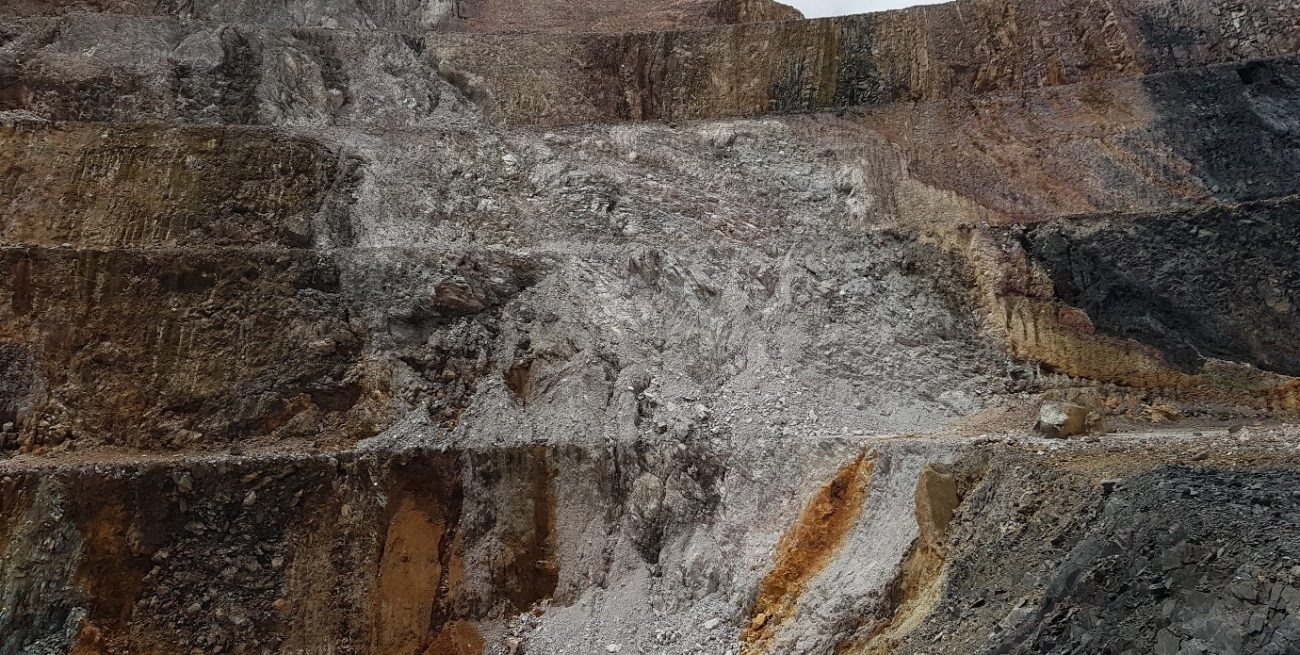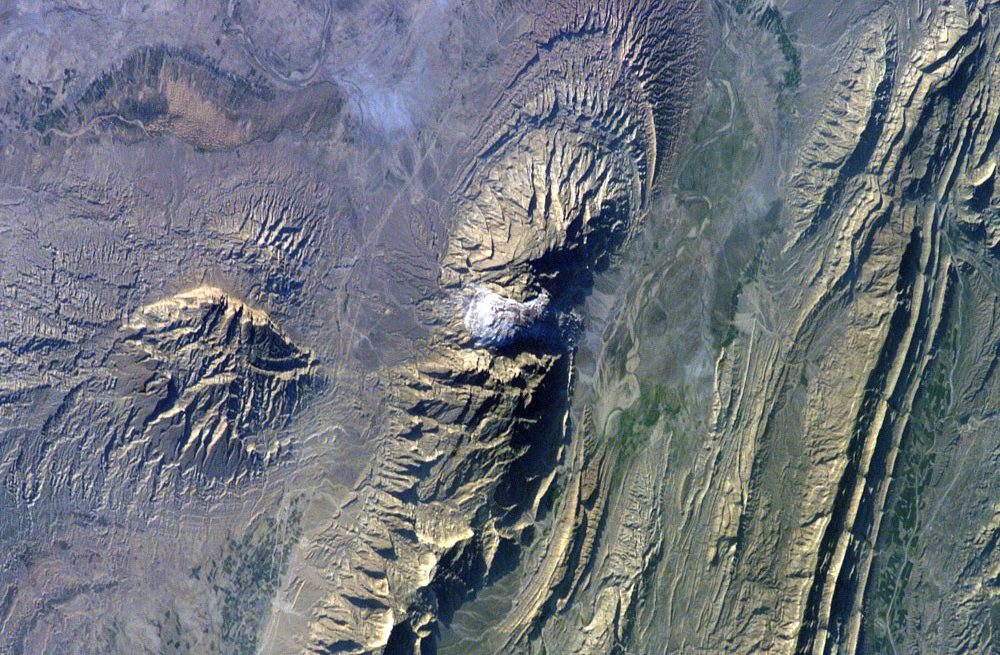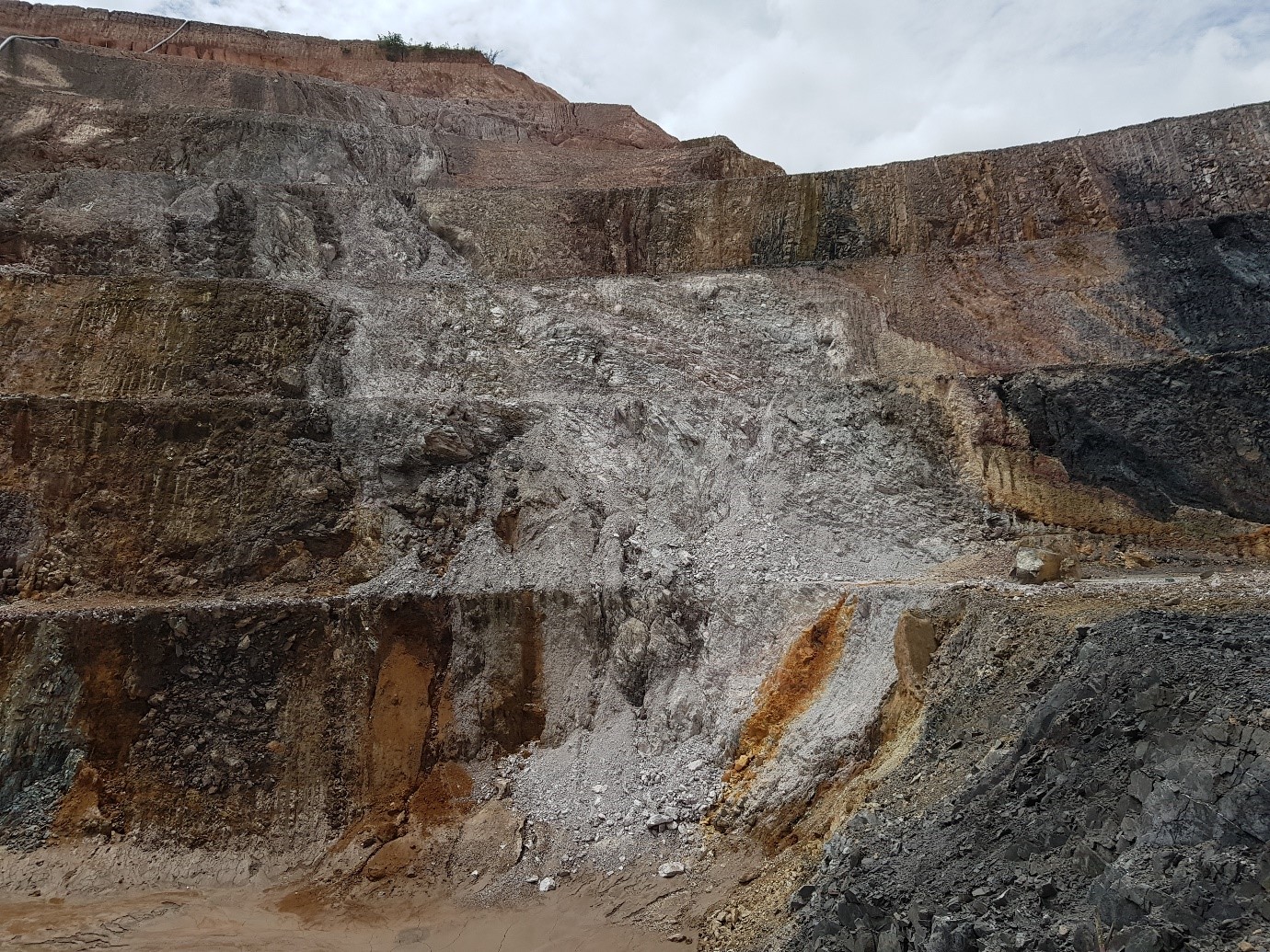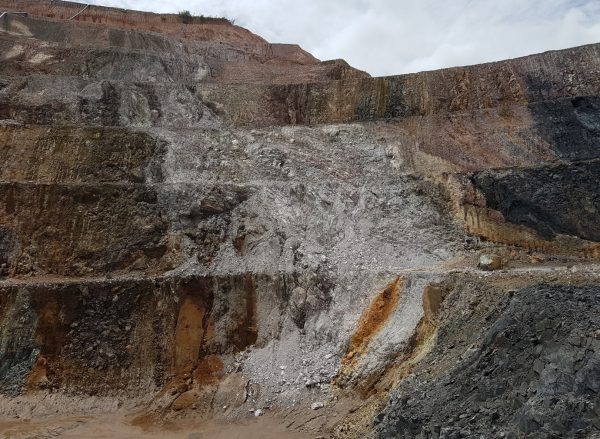NB This series will explain geological concepts that underpin the mining districts in which MMG operates. The articles are designed for non-geologists, to promote an understanding of the interesting forces and processes that lead to ore formation.
Did you know that there are places in the world where huge volumes of salt move slowly through the Earth’s crust like magma, and sometimes even erupt at the surface like volcanoes? For billions of years, salt has helped to shape the geology of the planet. MMG’s Kinsevere mine is located in the copper-rich Katanga Province of the Democratic Republic of the Congo, which also happens to host some of the world’s best examples of ancient salt tectonics – also known as ‘halokinesis’, which basically means ‘moving salt’.

(Image 1: A halokinetic breccia (pale grey) cuts through the Kinsevere pit wall)
The word ‘salt’ in the context of salt tectonics includes sodium chloride (which we all know as table salt) but also potassium, calcium and barium salts that were deposited in layers from mineral-rich lakes or shallow oceans as water was evaporated by the warmth of the sun. Think about Australia’s pink salt lakes or the residues of salt seen in high-stand rock pools at the beach. The process in the deep past was the same.
Certain times in Earth history have been particularly productive for salt. In the case of the DRC and Zambia, this occurred about 800 million years ago when parts of the Earth’s crust were being pulled apart, leading to the opening of small, shallow seas within the continent. At the time, this area was located near Earth’s equator and therefore the sun was relatively intense. This caused the oceans to sporadically evaporate and leave behind layers of solid salt, some hundreds of metres thick. After this, the oceans deepened and more typical marine sediments (such as the siltstones that host Kinsevere) were deposited on top.
This became particularly interesting when the salt, buried by thousands of meters of sediment, began to move. Under pressure from the layers of rock above, the salt started to behave strangely. It slowly began to deform and ‘flow’ towards areas of lower pressure – behaving more like a thick, buoyant liquid than a solid mineral. As it flowed, it broke up and ground the rock on either side into a mixture of pieces that geologists call ‘halokinetic breccias’. In some instances when the salt has dissolved away, these broken rocks are the only indication that it was ever there.

(Image 2: Salt erupts (centre of image) through folded rocks in the Zagros Mountains of Iran. Image courtesy of NASA)
Once salt starts moving it may become trapped by folds or faults in the rocks, creating large, isolated salt bodies called salt domes or ‘diapirs’ which sometime become salt mines such as those found in modern-day Europe. More spectacularly though, the salt can find pathways to the Earth’s surface and slowly erupt, feeding salt glaciers, or ‘namakiers’, that flow across the landscape. A present-day example of this occurs in the Zagros Mountains of Iran.
On their way towards the surface salt diapirs are highly destructive, breaking and warping the rocks around them and carrying large fragments – in some cases up to kilometres across – along for the ride. In the area around Kinsevere today many such ancient fragments are exposed at the surface, separated from each other by halokinetic breccias. Together, the fragments form what we call ‘megabreccias’. What is of interest to miners is that many of the megabreccia fragments in the DRC host copper and cobalt orebodies.
Another way that salt affects geology is by allowing rocks to slip and slide along it with far less friction than usual. About 550 million years ago in Zambia and the DRC, layers of slippery salt left behind in the rocks had a huge influence on the way that the surrounding sediments deformed when compressional forces in the Earth’s crust began to form mountains. Enormous volumes of rock were propelled along faults that were ‘lubricated’ by salt, and the salt also allowed the rock layers to bend and fold against each other in a highly discordant, unusual way.
So there you have it: salt tectonics simply describes the ways that rocks move when salt is present. For MMG, understanding these processes is also critical to understanding copper mineralisation at and around Kinsevere in the DRC. Salty fluids are great at dissolving and transporting base metals like copper, cobalt, lead and zinc, while salt breccias and diapirs create pathways for these metal-bearing fluids to move through the rocks. It’s no coincidence that most of the copper deposits in the Katanga Province occur within regional-scale salt megabreccias.
Who would have thought that humble salt could cause so much destruction, and yet set the scene for the formation of one of the world’s richest copper districts?
About the author
Erin Carswell BA/BSc (Hons), MSc (Earth Sciences)





